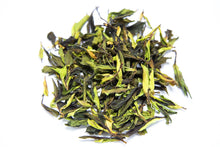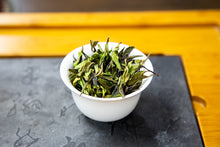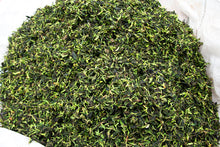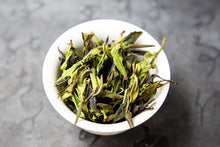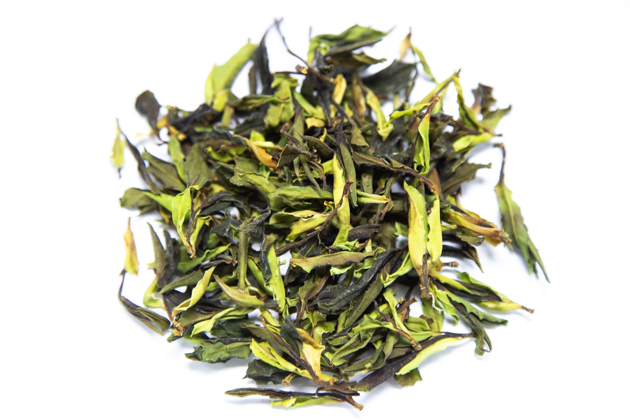 We have released the 2024 Da Xue Shan Wild White Tea Loose Leaf. This tea was produced under our direct supervision during our stay in Yunnan Province, ensuring meticulous production management on site.
We have released the 2024 Da Xue Shan Wild White Tea Loose Leaf. This tea was produced under our direct supervision during our stay in Yunnan Province, ensuring meticulous production management on site.
Definition of Wild Tea in Yunnan Province
People in Yunnan strongly associate Camellia taliensis with wild tea, regardless of where it is grown. Even if the tea is not from the mountains, they still refer to it as wild tea due to its appearance. This naming convention has made "wild tea" synonymous with Camellia taliensis. Consequently, even if the tea is grown and picked from a tea garden in front of a house in the village, it is still called wild tea. Similarly, in both Yunnan and Japan, plants originally growing in the mountains are called mountain vegetables, even if they are cultivated in fields.
Similarly, both in Yunnan and Japan, plants originally growing in the mountains are referred to as mountain vegetables, even if they are cultivated in fields. This cultural practice highlights how the term "wild tea" has become ingrained in the local vernacular, transcending the actual growing conditions.
However, for those who have never visited the growing areas and instead buy tea from middlemen or local tea shops in Yunnan, they accept the term "wild tea" at face value. This has led to the current situation where teas labeled as wild tea flood the market.
Cultivated Camellia Taliensis Sold as Wild Tea in Yunnan Province
In recent years, due to the popularity of wild tea, Camellia sinensis has been cultivated in various parts of Yunnan Province. Additionally, some farmers in mountainous villages dig up wild tea plants from the mountains and replant them in tea gardens near their villages. Although these are wild species, they are not truly wild tea, yet they are marketed as "wild tea." For more details, please refer to the following article: https://hojotea.com/jp/posts-1336/
Based on our experience, over 95 to 99% of the tea labeled as "wild tea" on the market is made from cultivated Camellia taliensis.

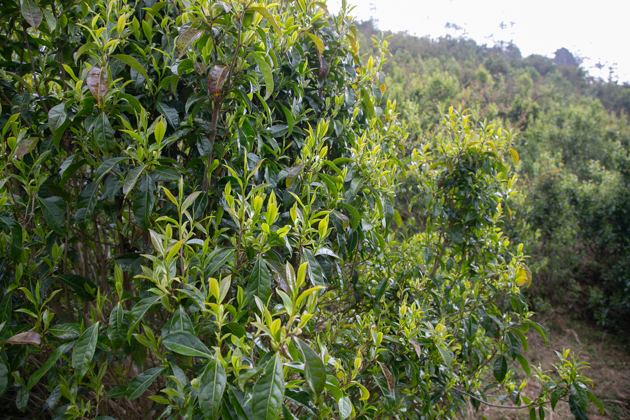 . Even within the same Camellia taliensis species, there is a notable contrast in flavor and aroma between genuinely wild tea plants and those transplanted near villages. Specifically, the distinction between authentic wild tea and cultivated varieties is most apparent in the length of the aftertaste. True wild tea boasts a remarkably prolonged aftertaste, highlighting its distinctiveness upon comparison.
. Even within the same Camellia taliensis species, there is a notable contrast in flavor and aroma between genuinely wild tea plants and those transplanted near villages. Specifically, the distinction between authentic wild tea and cultivated varieties is most apparent in the length of the aftertaste. True wild tea boasts a remarkably prolonged aftertaste, highlighting its distinctiveness upon comparison.
We are dedicated to sourcing wild Camellia taliensis tea, which involves frequent visits to various regions to meticulously select the freshest tea leaves available.

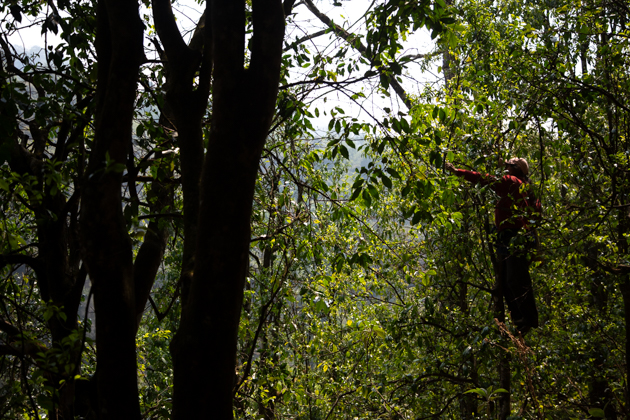 Scenes of wild tea picking
Scenes of wild tea picking 
Producing White Tea with Many Young Buds
Young buds are considered optimal for the production of white tea. As tea leaves develop and mature, their stems thicken, posing challenges during the withering process and increasing the likelihood of over-fermentation. Despite these challenges, tea leaves are typically valued and priced based on weight, leading tea pluckers to prioritize larger, more mature leaves. 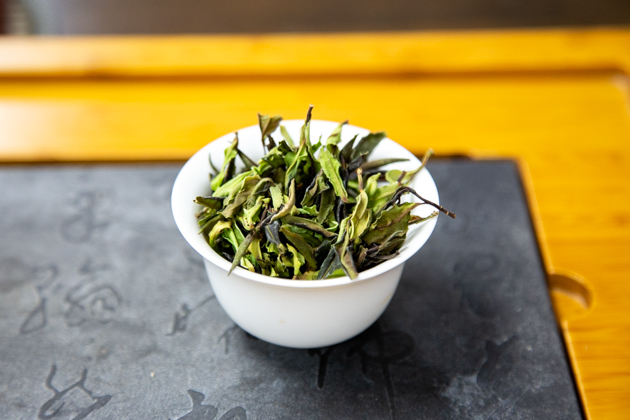 We consistently monitor the condition of fresh tea leaves and are willing to pay above market prices to secure younger buds specifically for our white tea. This commitment ensures that our wild white tea features many small leaves, offering a unique product not found in other stores.
We consistently monitor the condition of fresh tea leaves and are willing to pay above market prices to secure younger buds specifically for our white tea. This commitment ensures that our wild white tea features many small leaves, offering a unique product not found in other stores. 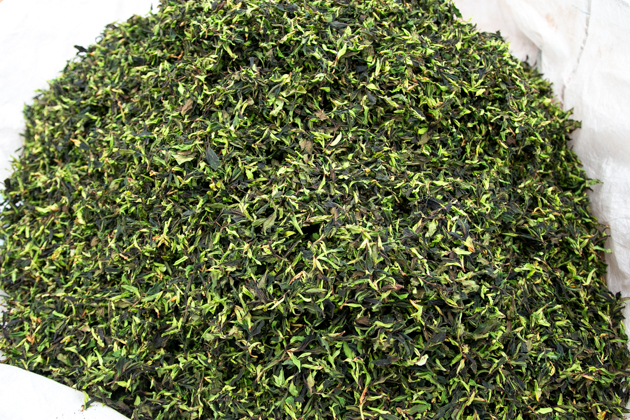
Meticulous Production Management for High-Quality White Tea
The classification of white tea hinges on its natural drying method, whether through sun-drying or air-drying. Despite its seemingly straightforward production process, the popularity of white tea in Yunnan has led to widespread production. However, finding producers capable of effectively managing the production process remains exceedingly rare. 
Seen drying Camellia talaiensis on the floor by the roadside in town. These will undoubtedly be sold as wild tea. While this withering method is unthinkable to us, it is the standard in Yunnan Province.
Camellia taliensis leaves spread out for withering by the roadside—a common sight in Yunnan where they are destined to be sold as wild tea. While this practice may seem unthinkable to us, it reflects the standard approach in Yunnan.
To achieve high-quality white tea with optimal flavor, proper withering is essential. Withering initiates enzymatic oxidation through controlled dehydration, reducing moisture content in the tea leaves. This process demands a deep understanding of the molecular transformations occurring within the leaves and meticulous control over each stage.
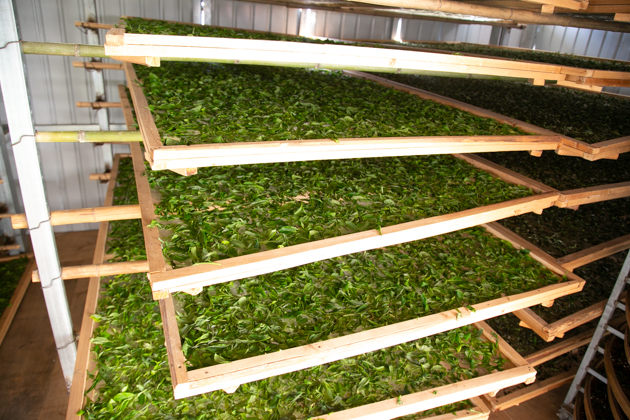
Since we are able to travel to China, during our visit this year, we provided comprehensive guidance on the selection and installation of production equipment, as well as on refining withering techniques. We diligently monitor the condition of tea leaves daily, overseeing production directly on-site. Thanks to these efforts, we've successfully crafted white tea characterized by its vibrant green hue and delicate floral aroma.
Typically, issues with picking methods, equipment setup, or withering procedures can lead to improperly withered tea leaves, potentially causing over-fermentation and resulting in a musty odor.
The characteristic of wild white tea
This year's Da Xue Shan Wild White Tea boasts a high concentration of tender young buds, delivering a gentle and mellow flavor profile. It exudes fragrances reminiscent of Shine Muscat, apple, young tomato, citrus, and herbal notes, with a subtle hint of honey. The tea possesses a robust body, with flavors that expand across the palate and a remarkably long, lingering aftertaste that resonates deeply.

Perfect for cold brew
Da Xue Shan Wild White Tea, like other white teas, offers exceptional flavor when cold brewed. To cold brew, use 5 grams of tea leaves per 1 to 2 liters of water. For optimal results, use cooled boiled water to enhance the tea's delicate flavors and aromatic notes.
Due to the active enzymes in white tea, it's advisable to cold brew at a low temperature, ideally in the refrigerator. This method facilitates gradual extraction of the tea's components, resulting in a refreshing flavor profile reminiscent of Shine Muscat.





